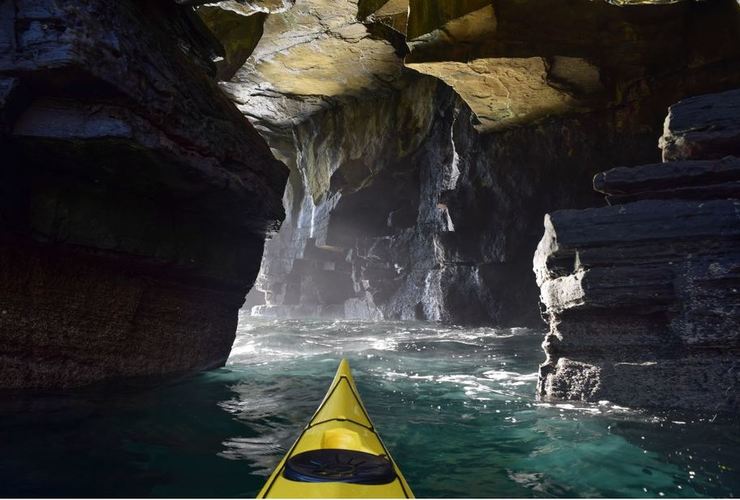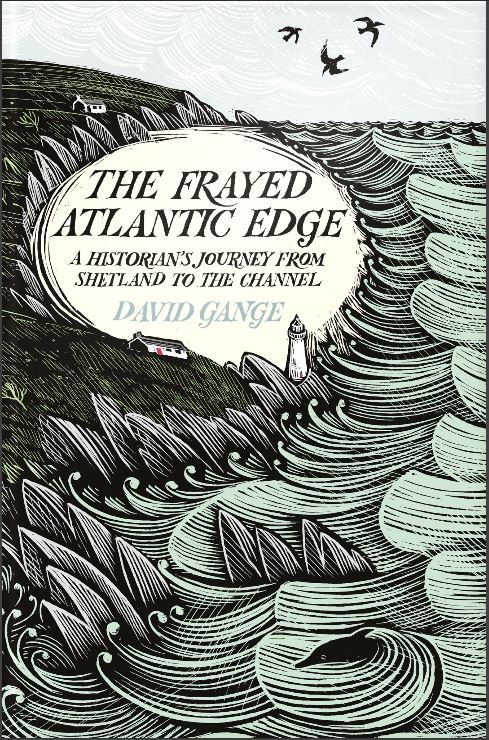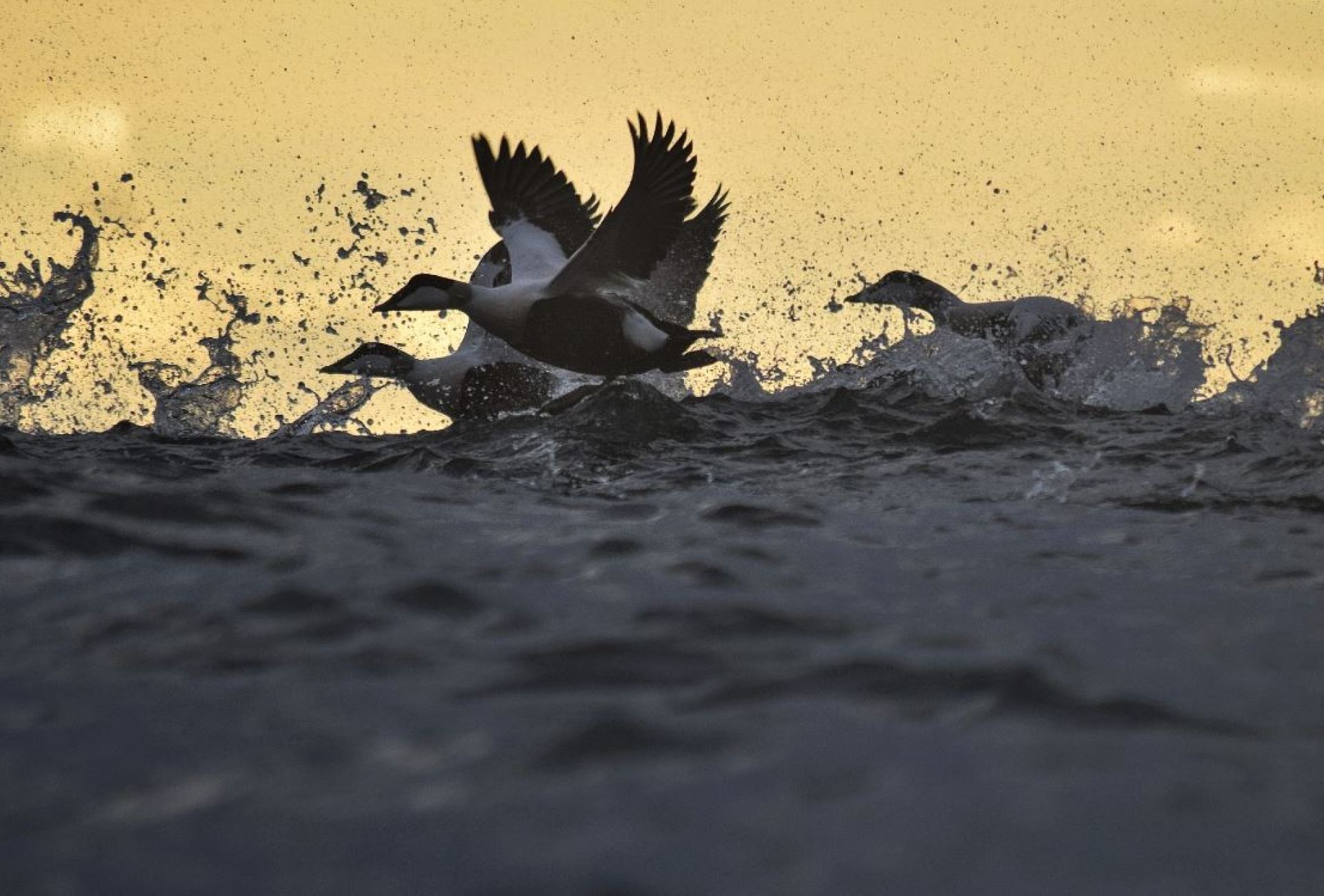Wild Words: an interview with author David Gange
In his new book 'The Frayed Atlantic Edge', David Gange recounts an adventure by kayak of the exposed western coasts of Britain and Ireland
 Slung low on the water surface, David Gange's book The Frayed Atlantic Edge brings a seafaring perspective to the ecology of coasts, coves, and inlets, as well as revealing rich histories of communities nestled between land and water.
Slung low on the water surface, David Gange's book The Frayed Atlantic Edge brings a seafaring perspective to the ecology of coasts, coves, and inlets, as well as revealing rich histories of communities nestled between land and water.
Drawing on archival histories and poetic literatures and languages, Gange (a Senior Lecturer in modern history at the University of Birmingham) shows that understanding the significance of marginalised pasts helps turn the tide on how we imagine and celebrate both our coastal communities and the British and Irish islands as a whole.
The Trust's John Muir Award Scotland manager Toby Clark got in touch to find out more...
How did kayaking help you see the coast and its communities differently?
Being in a kayak gives a unique perspective – both on and from the water. Riding wave peaks and troughs means that within seconds your horizon changes from perhaps 30 miles to three feet away. You feel, or anticipate each ferocious tidal stream, the sweeping movements of huge bodies of water. Coastal languages and dialects like Shetlandic and Gaelic have such richness in the subtlety in describing the seas around us: a word for every twinge and turn on the water so that water was named and known in the same detail as today’s city streets.
The view from the water was striking too. Kayaking alone under vast cliffs of Unst immersed in wild nature with no obvious sign of humans was an experience. However, later going through Shetland archives it was interesting to discover all the nooks and crannies of the cliffs are also named and mapped. The places that seem the wildest have all been domestic – every cliff ledge once an everyday resource or place of work. It is easy to miss the rich linguistic history to these wild places, because only a few of them – such as the Aran Islands – have really been collected in detail.
Why have the words of wild coastal places been often overlooked?
That’s a big complex question that the book in part tries to understand. One aspect was the massive efforts towards integration in Britain and Ireland, around the 18th Century, when Metropolitan centres tried to impose practices that had worked in cities onto coastal communities – this national integration, justified by the ideas of the Enlightenment (which was a disaster for coastlines) was thought to help ‘save’ the coastal ‘victims of history’. It was a technique that went hand in hand with imperialism.
City thinkers supplanted what had been working in these remote places with unsustainable models – mistaking sustainable practices built through deep knowledge of specific landscapes for throwbacks to an era before Enlightenment knowledge transformed the potential of farming, fishing and understanding the world. This disregard for coastal community knowledge and traditions included language.
A little later, the Education Acts of the 1870s were used, aggressively, to try and enforce a National Language. Whilst useful in raising literacy in places like London, and still almost always celebrated by historians, these acts were a disaster in places like the Western Isles that witnessed a crusade against language, local knowledge and Gaelic worldviews.
This was a disaster that has only begun to be reversed relatively recently. In the 1970s organisations such as Comunn Eachdraidh Nis (Ness Historical Society) started giving dignity back to local languages and changing the stories. These communities needed to recover the past to find ways of moving beyond the destructive fishing and farming methods of the present to generate sustainable futures. It is no coincidence that one of the first things that the local historians of Ness, and places like the Aran Isles (Galway Bay), did was to reclaim the place names and maps of their own coasts and cliffs.
In your book you talk about the impact of language and place helping shape ‘the attitudes of millions’ through what is called (modern) nature writing. Can you explain more?
Nature writing 15 years ago tended to paint an idyllic view – often ignoring how some communities in remote places were wiped out. Conversely, historians were very good at telling the stories of the clearances from a destructive perspective – the dramatic evil done.
It has been really exciting to see this situation change. Now, more and more nature writers, such as Robert Macfarlane, run their writing through with histories, and do deep research to understand the cultural significance of, and pay tribute to, the rich flourishing communities that used our ‘wild’ landscapes before they were disrupted by attempts to form national cultures. We are beginning to value languages such as Gaelic, with its rich culture of nature, as a way of ordering the world which resonates with environmentalism today. It’s becoming clearer that local histories can help current ecological thinking.
What local story tellers have influenced you?
Poets in particular. I’m especially fascinated by those who have dedicated their lives to one place. Christine Evans’ accounts of Bardsey Island, off the Llŷn Peninsula, are beautifully inventive rereadings of an island – so much more revealing than the work of any historian concerning how we can interpret small islands. They help us get past stereotypes such as islands as places of isolation and exotic escapism with pasts richer than their futures.
Other poets include Jen Hadfield and Roseanne Watt – both current Shetland poets. Rosanne’s Mother Wave / Moder Dy is the best new poetry book I’ve seen for a while: everyone should read it. It helped show me how Shetland language is so connected to landscapes and seascapes – and how by familiarising ourselves with that language we find diverse new perspectives on place.
Another inspirational writer is Tim Robinson – a kind of poet in prose and cartography of the landscapes of the west of Ireland. His work, I think, offers the richest body of place writing the Irish and British Islands have ever produced. His deep histories, layering century after century through his visual maps and his textual ones, are totally unrivalled – what we need is a Tim Robinson for every place! His first book, Stones of Aran: Pilgrimage is a great place to start.
Why are wild places important to you?
Most historians have traditionally written as though all the important things stop at the edge of human society: as though the important processes of the past take place between humans and humans alone. However, wild places where human fates are tied to animals and elements – where herrings or tidal streams are more important historical actors than kings or parliaments - helps us write richer and deeper histories.
It is so important that organisations such as the John Muir Trust are helping care for wild places, the histories that run through them and the increasingly vigorous community initiatives that are reclaiming our Atlantic coastlines from two centuries of marginalisation. Sandwood Bay and Quinag are probably two of my favourite areas. From monitoring expansive coastal dune systems to reintroductions of water voles I find the Trust’s detailed attention to the past and future of our land and seascapes inspiring.
It is important that organisations like the John Muir Trust listen to the language and stories of coastal communities to help them thrive and provide a way for visitors to understand the rich cultural worlds they’re entering – slowing down drivers of coastal routes (like the North Coast 500) so that they can take some of the values of Gaelic, Irish or Welsh culture back to the cities, rather than thrusting city values into coastal places as has so often happened before. The challenges of overtourism need careful management, and the Trust should be champion of the benefits of exposing people to the different cultures of places beyond urban, suburban and factory-farmed landscapes as of well wild nature itself.

 Image credits: David Gange
Image credits: David Gange
---
Celebrate our Wild Words month with this special offer: 25% off for your first year of John Muir Trust membership* if you join us during October 2019. Use the promo code: WILDWORDS (*Ts & Cs apply).